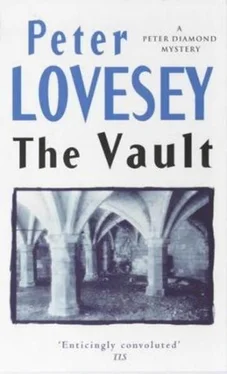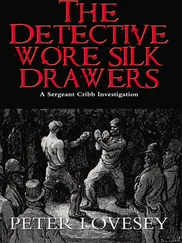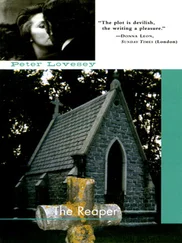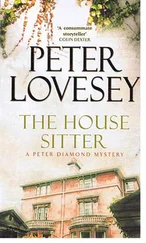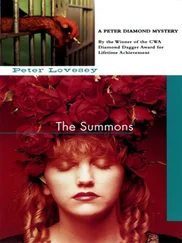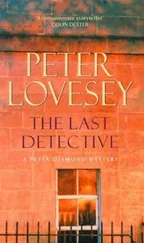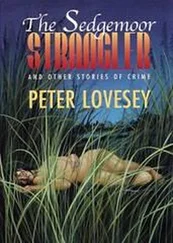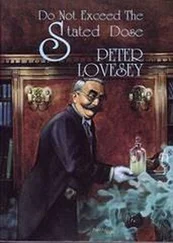Diamond replied dourly that he didn't have anything to say about Frankenstein.
"That's rather odd if I may say so because according to the evening papers, you're digging up bits of human anatomy in the cellar of the house where Frankenstein was written."
"That may be so," said Diamond, already wishing he had not agreed to do this.
"There's no 'may be' about it, Superintendent. Either it's the Frankenstein cellar, or it isn't. Have you read Mary Shelley's book?"
He admitted that he had not.
"Better get hold of a copy, hadn't you?"
"I've got more important things to do."
Paxman pricked up his eyebrows in a way familiar from years of Newsnights. Talking to a TV screen was a new experience for Diamond and concentration was difficult.
"You're familiar with the story, anyway-how Frankenstein put together this creature from spare parts gathered from dissecting-rooms and tombs?"
"I should think everyone has heard of it."
"And you won't deny that you're finding bones down there?"
"The bones have got nothing to do with Frankenstein" Diamond insisted.
"So can you reveal exclusively on Newsnight that he isn't a suspect?" The lips curved a fraction, in case any viewer had not picked up the irony.
"He's fiction, as far as I know."
"Well, that's good news for nervous viewers. What about the monster?"
Diamond felt he had endured enough of this. "I'm speaking to him, aren't I?"
There was an awkward moment when nothing was said. Then: "Touche, Mr Diamond. Bath Police are well on the case, by the sound of things." Paxman glanced at his notes. "You're quoted as saying you could find hundreds more bones in this vault."
He knew that remark would be turned against him. "It's over a churchyard."
"Over a churchyard?" Just one of the eyebrows popped up. "While you're catching up on your reading, you'd better look at Dracula as well. He could easily come into this."
"It wouldn't surprise me-if you people have your way."
"If you don't mind me saying, you sound slightly disenchanted by all the attention, Superintendent."
"I'm trying to keep it sensible, that's all."
"That's a pious hope I should think. Is there any way we can help?"
"Am I allowed to be serious for a moment?"
A smile.
"We're keen to interview anyone who worked on the Pump Room extension-which is over this vault-in the period 1982 to 1983."
"Archaeologists? Construction workers?"
"Anyone at all. Any information will be treated in confidence." He gave the Bath number.
"There you have it, then," Jeremy Paxman said to camera. "Don't call us, call the Bath Police. We'll display the number at the end."
In Make-Up, they wiped away the powder and told him he deserved a medal.
"What for?"
"You gave as good as you got. No one's ever called him a monster."
"I expect he thrives on it," said Diamond. "They'll edit that bit out."
"No, they won't. It was good television."
Wearily, he returned to his car and cruised around the city's infuriating one-way system looking for the route to Bath. He always got it wrong. At one stage, trying to read the directions, he drove through a red light. It was a pedestrian crossing and nobody was in the way, but with a sense of inevitability he saw in his mirror the pulsing blue beacon of a police car. They overtook him and forced him to stop.
"This is all I need," he told the young officer whose head appeared at the window.
"Superintendent Diamond?"
"You know me?"
"We were under orders to find you, sir. You're asked to make contact with Bath CID."
"That's why you stopped me?"
The young man grinned. "Well, it wasn't to ask the way."
Revived, he got out and ambled across to the patrol car to use their radio. Keith Halliwell answered the call.
"What's this-overtime?" Diamond asked, chirpy again.
"I've been trying to reach you, sir. You were supposed to get a message at the TV studio. We had a call from the lab at Chepstow earlier. They found something."
"What's that?"
"In the bits of concrete that came with the hand bones, they chipped out a piece of metal shaped into a skull."
"Full size?"
"No. Really small. Like a badge. This was curved, so they assume it was attached to a ring originally. You can see where it broke at the back."
"A ring? What are we talking about here? The kind of thing kids wear?"
"Yes. Cheap metal."
"In the shape of a skull, you said?"
"An animal skull, like a bull, but with large teeth sticking up, as far as the eyes."
"Motorhead."
"I'm sorry?" said Halliwell.
"You should be," Diamond chided him. "Don't you remember Heavy Metal?"
"Would you say that again, sir? I'm getting some static."
Diamond rolled his eyes at the young officer beside him. "He's getting some static. Rock music in the seventies, Keith. The animal skull with the teeth was the Motorhead emblem. Your musical education is sadly lacking. Where were you-at the ballet?"
"I was just a baby."
"Oh, yes?"
"The point is, sir, the ring could have broken when the body was dismembered. It may have belonged to the victim."
"Where's the rest of it, then? Shouldn't it be with the bones?"
"The killer could have removed it from the victim's hand, thinking it would help identify the corpse."
"Equally, it could have belonged to the killer and snapped off when he was doing his grisly work."
"His what, sir?"
"Never mind, Keith. You can knock off now."
He said goodnight to the patrol team, ambled across to his own car and drove home thinking it had not been such a bad day's work. Starting off with no more than a few bones to investigate, he was ending up with a mental picture of someone: probably young, in leathers and jeans, long-haired, a rocker. Rightly or wrongly, victim or killer, this had to be progress.
Then he remembered the ACC's 'At Home'. He would never make it there by eight. Steph would be sitting at home, dressed and ready to go. He'd better get to a phone.
NOT LONG after Joe left Noble and Nude, Ellis Somerset returned with the vanload of antiques from Si Minchendon's house in Camden Crescent.
Peg helped unload. To be precise, she unloaded the two pictures. The rest she left for Ellis to move.
She had been on tenterhooks to inspect those pictures. There could be no question that they were watercolours in William Blake's style, with the strange, archaic look his drawing had acquired from making hundreds of studies of medieval tombs during his apprenticeship as an engraver. They were essentially graphic illustrations in quill and ink, using the colour mainly as tint, rather than to indicate form. But the subjects of the pictures, if Peg's interpretation was correct, were not recorded anywhere. On her way back from Camden Place she had called at Bath Library and looked at the major biographies of Blake by Peter Ackroyd and David Erdman; neither made any mention that he had illustrated Mary Shelley's Frankenstein.
She was sure in her mind that they could represent nothing else. The first had to be the frozen valley of Chamonix, with Mont Blanc "in awful majesty" as a backdrop for the meeting between Frankenstein and the creature he had brought to life. The figures facing each other differed markedly in physique, the one a mere man, puny beside the abhorred monster, who was unlike the Hollywood version, but faithful to Mary Shelley's concept: yellow skin thinly covering the muscles and arteries, lustrous black hair, pearly white teeth, black lips and watery, dun-white eyes.
In the second picture, the same grotesque face was staring through the window of the inn where Frankenstein's bride Elizabeth lay strangled on her wedding night. The gloating, grinning monster was mocking Frankenstein. What other interpretation could anyone make?
Читать дальше
